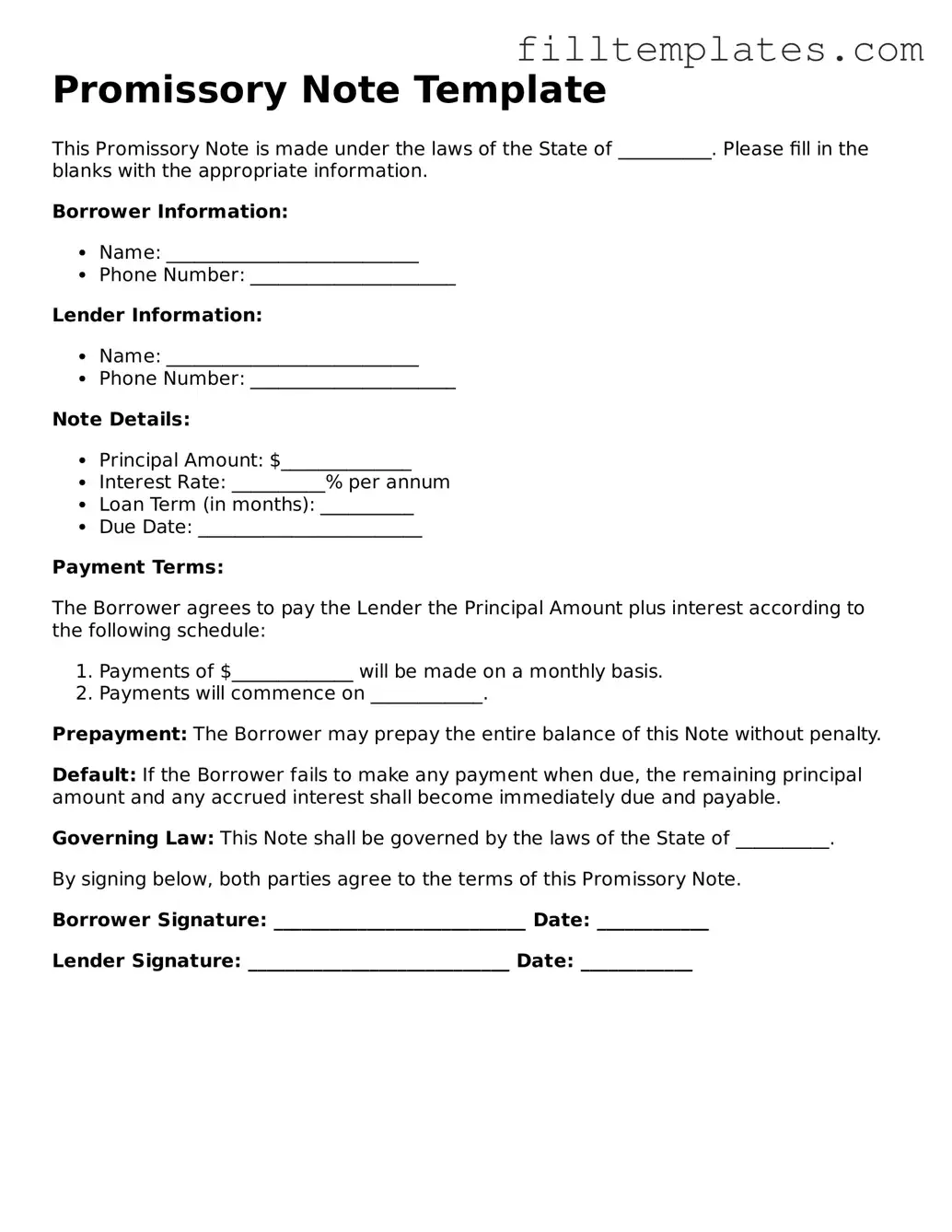Promissory Note Template
This Promissory Note is made under the laws of the State of __________. Please fill in the blanks with the appropriate information.
Borrower Information:
- Name: ___________________________
- Phone Number: ______________________
Lender Information:
- Name: ___________________________
- Phone Number: ______________________
Note Details:
- Principal Amount: $______________
- Interest Rate: __________% per annum
- Loan Term (in months): __________
- Due Date: ________________________
Payment Terms:
The Borrower agrees to pay the Lender the Principal Amount plus interest according to the following schedule:
- Payments of $_____________ will be made on a monthly basis.
- Payments will commence on ____________.
Prepayment: The Borrower may prepay the entire balance of this Note without penalty.
Default: If the Borrower fails to make any payment when due, the remaining principal amount and any accrued interest shall become immediately due and payable.
Governing Law: This Note shall be governed by the laws of the State of __________.
By signing below, both parties agree to the terms of this Promissory Note.
Borrower Signature: ___________________________ Date: ____________
Lender Signature: ____________________________ Date: ____________
